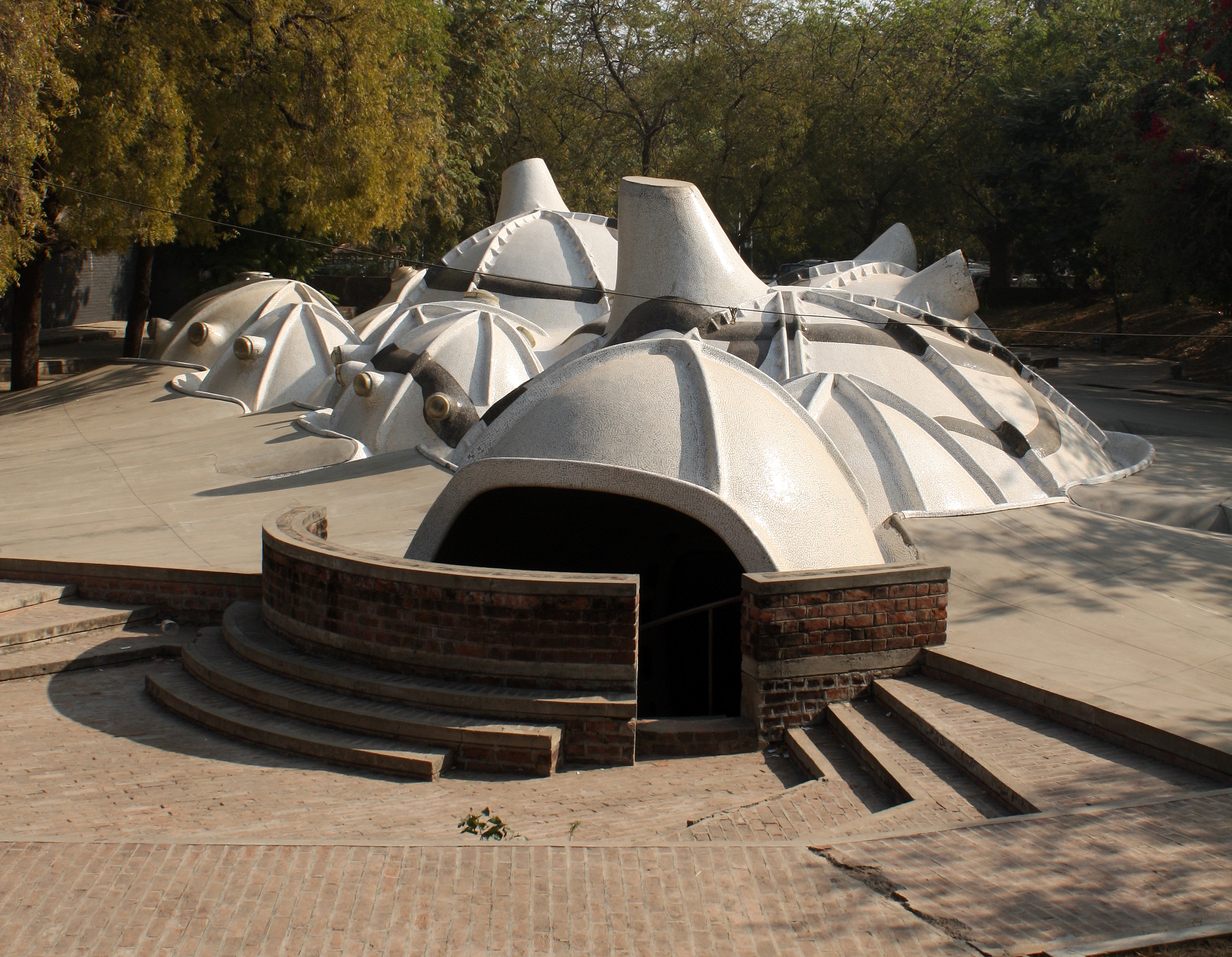Amdavad Ni Gufa by Daksha Burse

In the CEPT campus of Ahmedabad lies an unusual underground structure, well known as Hussain-Doshi Gufa that marks the collaboration of the great artist M F Hussain and the innovative architect BV Doshi.
The very first visual from the approaching campus road displays multifarious cave like structures that are blended together to form an amorphous structure. Cladded with white mosaic tiles and a black headless serpent Sheshnag (the divine serpent) running throughout the domed roofs, the Gufa shows no sign of approach into it. It’s only at a closer view after climbing down a flight of 4 risers, one finds a hidden entrance that further goes down to a transparent door decorated by black paint.
Situated along with the zen café and the Chester Herwitz Art Gallery, the whole site is paved and has brick facades hiding the two entrances to the Gufa.
An organic and sensuous space inside recreates the feeling of being under a thick canopy, in a dense primeval forest. Along with a temperature drop down due to the light reflecting white mosaic tiles, space offers a cold and contoured flooring that remains indigenous to the site and to the concept of a cave. The domed roofs have small snouts that allow in soft diffused light into the interiors that change the direction throughout the day according to the positions of the sun. Though the existence of voluptuous spaces makes it unbelievable for a person to find paintings inside, the interiors of the cave are filled with the paintings of MF Hussain flowing across the concrete surfaces of the walls, ceilings, and floors painted with bright colours and bold strokes. An inspiration from the Palaeolithic art ironically represents the present day menacing soldiers with guns (“face of organized, state violence”), a man with horns sitting on a chair with a gun in his hands (“evil power, he is the devil sitting there”). Hussain has also placed metal human figures between the columns. These paintings enhance the shadow play in the caves and also the myriad patterns created by the skylights.
The entire design is an interplay of intersecting circles and ellipses in plan and curvilinear walls and undulating columns that create a sense of mystery. They restrict the human sightlines beyond the circle or ellipse a human is standing in and make a person focus on the artwork around and hence help in a better understanding of those. Underground and unfathomable space the Gufa resembles a garbhagruha where one looks inward and connects to the divine, in this case to the divine art. Fusing past and present together the spaces creates a sense of timelessness. A person entering the space completely submits himself to the undulating choreography created by the two friends.
The Gufa shows a clear influence of Corbusier whom Doshi described as his guru and also signifies inspirations from the ancient Buddhist caves of Ajanta and Elora. The concept takes forms of tortoise shells and soap bubbles.
The Gufa efficiently displays the amalgamation of the proficiency and interpretations of the two revered Indians. To Doshi the cave signifies a personal quasi-spiritual space whereas for Hussain it is a genesis of human lifestyle from the caves to the present lavish spoilt environment; that is being clearly depicted in his art forms.
A unique juxtaposition of art and architecture, underground, and sky, ancient and modern the cave succeeds to be an atmospheric and intriguing space that appeals to the senses. It denies the prototype of a gallery space and creates a new definition of itself. Buried spaces, earth mounds, raised volumes and China mosaic finish renders the architectural energy conscious, in an otherwise harsh hot dry climate. Enigmatic in its spatial experience the form of Gufa is a direct translation of climatic and constructional obligations and an abstraction of personals fancies.
Written as a part of an assignment for Theory of Design

